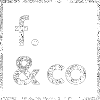Marketing as officialdom: the role of CMOs in today’s ecosystem
Sometime during the 90s, the startup mentality began spreading its own, specific vocabulary, and with it, an attitude that would soon start pervading even the largest organizations.
While many of the dreams and intuitions on which these young structures were based were unfortunately either lost or discredited when the startup bubble burst in 1998, most of the semantics remained, intact.
One of the most important contributions of the early startup era is that it contributed to professionalizing in-house marketers, much beyond the anecdotal role they held in previous decades. With them rose a new executive function, the CMO, and with it, a broad array of responsibilities that are oftentimes hard to limit.
Boardroom Empire
By reinvigorating the notion of governance, smaller structures started experimenting with various roles for various tasks. While the impetuses for them were sometimes naïve – in search of excessive flexibility and adaptability in the face of ever changing value propositions – the virtues of creative, information, customer (!), marketing, digital and media officers were tested, yielding some valuable insights.
In parallel, the 90s represent a time when began the inevitable decline in mass-audience ratings. With the advent of the internet, what Chris Anderson calls "The Long Tail" started to take hold in more and more industries. Not only are digital products no longer the exclusive monopoly of best sellers and top rated products, but even for products who retain a physical dimension and are not prone to digitization any time soon (shoes, or cars), the vectors of communication are more scattered than ever.
This "perfect storm" has had several consequences on marketing as a craft: what was formerly reserved to a very small elite of middle-aged white men (think MadMen's Don Draper) became a much more complicated business. To succeed in advertising nowadays, the combination of art and copy doesn't truly make the cut anymore.
A similar point is made in the latest Deloitte Review, where the authors take the evolution of CMOs as proof of the discontinuity that exists in the realm of marketing. The locus of creativity has, increasingly, been displaced by the intimate connection that exists between the promotional campaigns of a brand or company, and its deep-rooted identity. At least, such is the case for those who, like Oreo, Nike or Barack Obama, have leveraged the strength of networks to surpass the promise of traditional media.
Beyond the tipping point
Attempting to become "leaner", much in the tradition of Eric Ries' silver-bullet magic formula, ever-larger companies have started broadening their C-Suite to incorporate newer responsibilities directly at the executive committee level. One such role, and probably the most promising addition to the executive team, is that of the Chief Marketing Officer.
Though such titles may have been perceived as a passing fad some years ago, it now seems like the CMO has moved from being a glorified director of communications to the full-fledged, executive-level, right-hand of the CEO. A piece published in Ad Age mid-2011 declares that the role has become a new norm, quoting companies like Ford, L'Oreal, Levi's and Unilever as leaders in forging a shared sense of what it represents.
Interviewed in this context, Unilever's Chief Marketing and Communications Officer (CMCO?) Keith Weed confirms the new nature of the function: "The twin-headed trends of digitization and globalization feed off each other and accelerate the combination." The potential impact of conversations on the ongoing construction of brands, and with it the need to reconsider the notion of "engagement" much further, are calling for integrated market analysis and strategies at the highest level of the organization.
Thus, from the initial work of creative marketers focussed mainly on the construction of campaigns, the role of the marketing officers has evolved to integrate first more listening abilities, and with them a truly analytical aspect. A recent conference held by the global market intelligence firm IDC confirms the trend: "to be successful, today’s CMO has to become a Master of Data", says IDC's VP Executive Advisory Group, Richard Vancil. "The ability to do so is not just a "bet the marketing department" issue, it's a "bet the company" issue."
The chief of nearly everything
If Vancil is right, this means that CMOs' roles are not done including more responsibilities, and with them, more influence over the becoming of today's organizations. The flexible roots of the startup spirit remain to stick with the function, and with them an ever-expanding basis for activities that used to fall under other, more traditional umbrellas within the ocmpany. The "tipping point" may have been reached in terms of the acceptance of the function, yet much remains to be defined in terms of what the boundaries of this new marketing may be.
If all sensitivities to internal and external ideas are to be integrated under this expanded header of marketing officialdom, then knowledge management, R&D, several aspects of production and design, as well as all the traditional functions outsourced to creative agencies, might end up falling in the same court.
In the creative economy, the fate of every activity ends up falling to the hands of a new global agenda: that of continuous learning, continuous improvement, ubiquitous idea generation, multi-channel, pluri-vocal communication. In this context, what will remain of other traditional functions remains to be seen. They will have to develop their own sensitivity and porosity, or fall prey to the ever-expanding role of the CMO.


